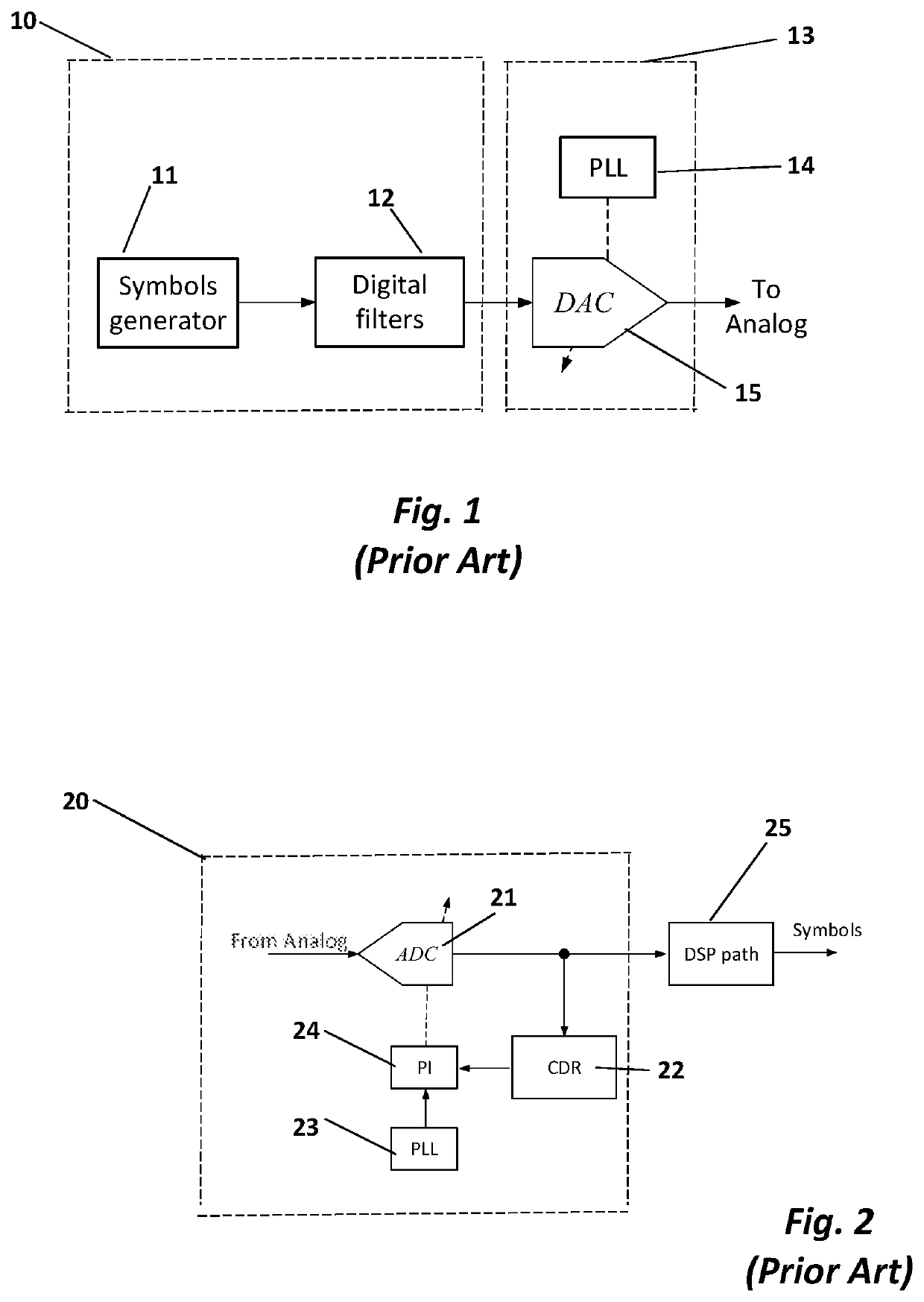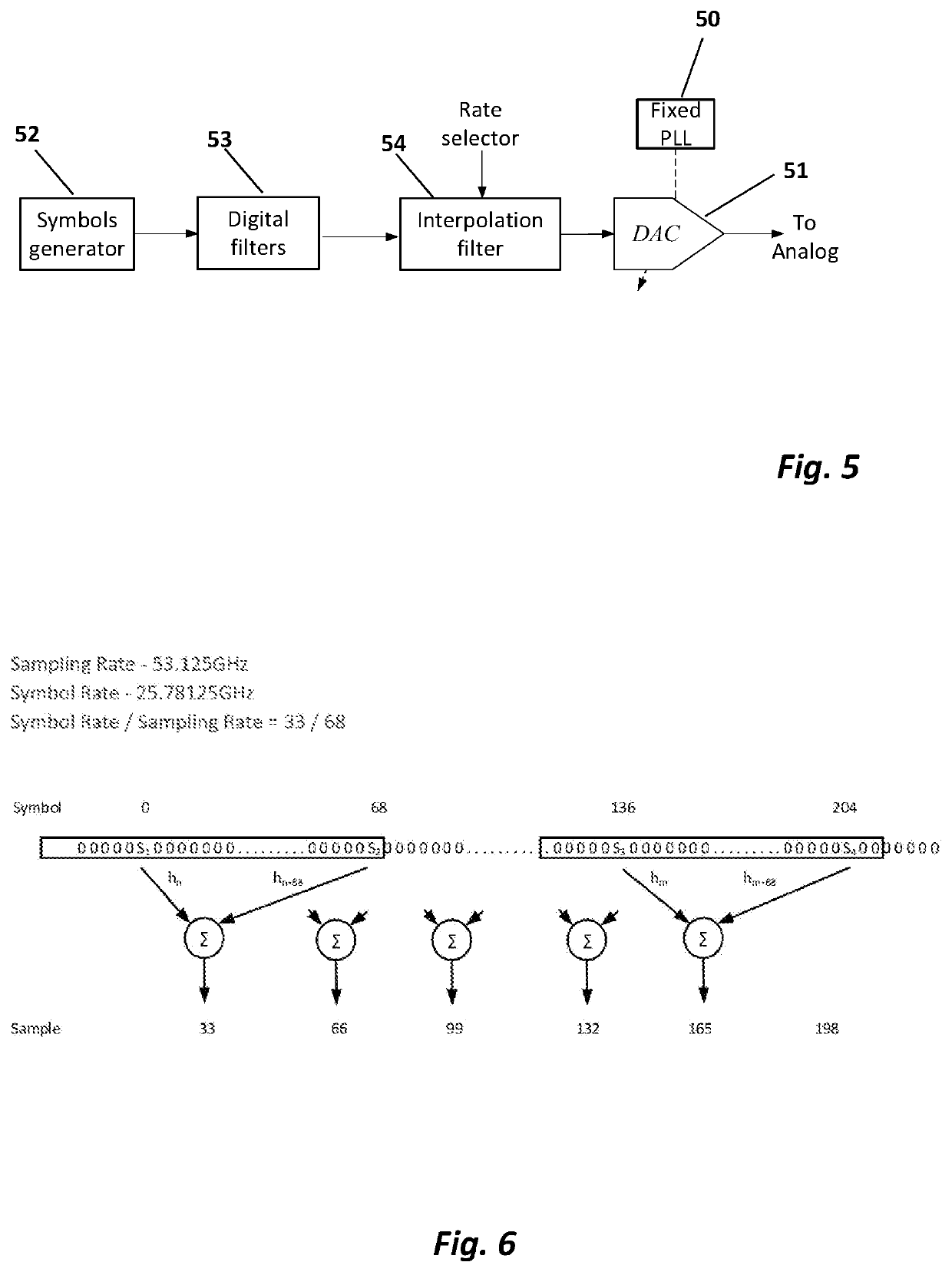Method and apparatus for implementing multirate SerDes systems
a serdes and multi-rate technology, applied in the field of serdes systems, can solve the problems of inability to apply decimation, inability to meet the requirements of the hardware, so as to improve both cost and performance, and facilitate engineering choice
- Summary
- Abstract
- Description
- Claims
- Application Information
AI Technical Summary
Benefits of technology
Problems solved by technology
Method used
Image
Examples
example
[0048]An illustrative example of the zero-stuffing process is shown in FIG. 6. In this example, the Sampling Rate is 53.125 GHz and the Symbol Rate is 25.78125 GHz, resulting in a Symbol Rate / Sampling Rate of 33 / 68. As shown the figure, 67 zeros are “stuffed” after each sample, thus yielding 68 samples, and then the stream is filtered, and the filter output is sampled at each 33 positions. Therefore, the correct symbols are sampled although the Symbol Rate / Sampling Rate is not an integer.
Receiver
[0049]FIG. 2 described above shows the block diagram of a prior art receiver. If the receiver has to be capable to operate at multiple symbol rates, the ADC 21 must be capable to sample the analog data at multiple rates. This in turn implies that given a symbol rate (which for the purposes of this description and without loss of generality we assume known) the PLL 23 must operate at that rate, which may be done by applying the same prior art solutions as hereinbefore described with reference...
PUM
 Login to view more
Login to view more Abstract
Description
Claims
Application Information
 Login to view more
Login to view more - R&D Engineer
- R&D Manager
- IP Professional
- Industry Leading Data Capabilities
- Powerful AI technology
- Patent DNA Extraction
Browse by: Latest US Patents, China's latest patents, Technical Efficacy Thesaurus, Application Domain, Technology Topic.
© 2024 PatSnap. All rights reserved.Legal|Privacy policy|Modern Slavery Act Transparency Statement|Sitemap



